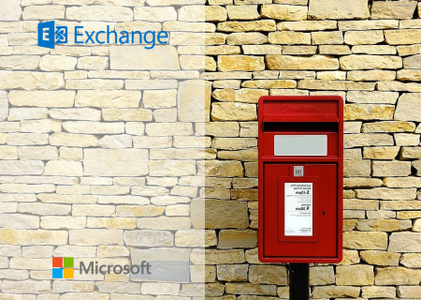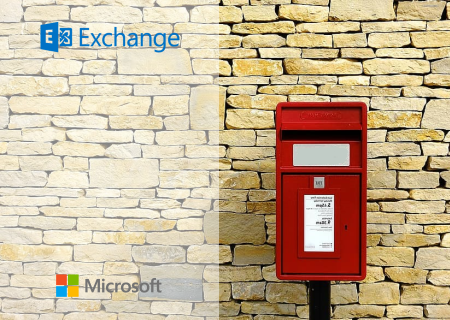Microsoft Exchange Server 2019 CU11 | 1.4 Gb
Languages Supported: 中文-Simplified, 中文-Traditional, English, Español,
Deutsch, Français, Italiano, 日本語, 한국어, Русский
Languages Supported: 中文-Simplified, 中文-Traditional, English, Español,
Deutsch, Français, Italiano, 日本語, 한국어, Русский
The Microsoft development team is pleased to announce the availability of Cumulative Update 11 to Exchange Server 2019. This update includes includes fixes for nonsecurity issues and all previously released fixes for security and nonsecurity issues.
Cumulative Update 11 for Exchange Server 2019 (KB5005334)
This September 2021 cumulative update (CU) install Exchange Emergency Mitigation (EM) service. This service is designed to help secure your servers that are running Microsoft Exchange Server by applying mitigations to address any potential threats against them. It uses the cloud-based Office Config Service (OCS) to check for and download available mitigations and to send diagnostic data to Microsoft.
This CU has following additional prerequisites:
- IIS URL Rewrite Module
- Universal C Runtime in Windows (KB 2999226)
Cumulative Update 11 for Microsoft Exchange Server 2019 was released on September 28, 2021. It includes fixes for nonsecurity issues and all previously released fixes for security and nonsecurity issues. These fixes will also be included in later cumulative updates for Exchange Server 2019.
This update also includes new daylight saving time (DST) updates for Exchange Server 2019.
New feature in this cumulative update
Microsoft Exchange Server 2019 now supports integration with Windows Antimalware Scan Interface (AMSI). This feature enables an AMSI-capable antivirus or antimalware solution to scan content in HTTP requests that're sent to the Exchange Server. Additionally, it will block a malicious request before it's handled by Exchange.
Issues that this cumulative update fixes
This cumulative update also fixes the issues that are described in the following Microsoft Knowledge Base articles:
5006980 Bad signature error using PerfView in Exchange Server 2019 and 2016 (KB5006980)
5006982 On-premises Exchange queues back up because of incorrect default value (KB5006982)
5006983 Exchange Server 2019 and 2016 certificates created during setup use SHA-1 hash (KB5006983)
5006984 PrepareAD fails if Computers container or RODCs are renamed or moved in Exchange Server 2019 and 2016 (KB5006984)
5006986 Opening an Outlook message from the desktop removes line spacing (KB5006986)
5006988 Export of .pst file is unexpectedly triggered again in Exchange Server 2019 and 2016 (KB5006988)
5006989 Accepted domains with wildcards for subdomains are not honored when Edge server maps AddressSpaces (KB5006989)
5006990 Exchange CU installation fails after you configure fallback to use default character set (5006990)
5006991 Mail quota warning messages no longer sent daily in Exchange Server 2019 (KB5006991)
5006992 No room lists found when trying to add a room in OWA in Exchange Server 2019 or 2016 (KB5006992)
5006993 Can't log on to OWA in Chrome if SSL is offloaded in Exchange Server 2019 and 2016 (KB5006993)
5006994 BCC values not retained in Sent Items in a shared mailbox in Exchange Server 2019 and 2016 (5006994)
5006995 Korean email messages display some recipients incorrectly in Exchange Server 2019 and 2016 (KB5006995)
5006996 Export-AutoDiscoverConfig exposes admin password and does not work against domain controllers that require signing (KB5006997)
5006997 Korean messages in OWA display "From" as "Start date" after you filter the list in Exchange Server 2019 and 2016
5006999 "401" error and Outlook repeatedly prompts for credentials in Exchange Server 2019 (KB5006999)
5007042 Error window appears when you view features in OWA Virtual Directory (KB5007042)
5007043 Exchange Server SU updates Add/Remove Programs incorrectly (KB5007043)
5007044 Start-MailboxAssistant not available in EMS in Exchange Server 2019 (KB5007044)
Exchange Server 2019 is designed to deliver security, performance and improved administration and management capabilities; attributes our largest on-premises customers expect from Exchange.
Security: Exchange Server 2019 requires Windows Server 2019. In fact, we recommend installing Exchange Server 2019 onto Windows Server 2019 Server Core. Exchange Server 2019 installed on Windows Server 2019 Core provides the most secure platform for Exchange. You also have the option of installing Exchange 2019 onto Windows Server 2019 with Desktop Experience, but we have worked hard to make sure running Exchange on Server Core is the best choice for our code.
We’re aware all media for Windows Server 2019 and Windows Server, version 1809 has been temporarily removed and Microsoft will provide an update when refreshed media is available. Exchange Server 2019 will be fully compatible with version 1809, and the refreshed version.
We also built Exchange Server 2019 to only use TLS 1.2 out of the box, and to remove legacy ciphers and hashing algorithms.
We’ve done significant work to allow Exchange Server to take advantage of larger core and memory packed systems available in market today. With our improvements, Exchange Server can use up to 48 processor cores and 256GB of RAM.
We’ve re-engineered search using Bing technology to make it even faster and provide better results, and in doing so have made database failovers much faster, and administration easier.
We’re adding dual storage read/write capabilities to Exchange Server 2019 using Solid State Drive (SSD) technology to provide a super-fast cache of key data for improving end user experience. We also talked about this in our Email Search in a Flash! Accelerating Exchange 2019 with SSDs session at Ignite.
We also changed the way database caching works to allocate more memory to active database copies, again improving the end user experience. You can learn more about Dynamic Database Cache from Welcome to Exchange Server 2019! video and slides.
The improvements we have made to Exchange Server 2019 will enable you to scale to a larger number of users per server than ever before, use much larger disks, and see the latency of many client operations being cut in half.
We all rely on Exchange for calendaring, and we know large enterprises are heavy calendar users. We are bringing a few key features such as restricting the forwarding of meeting requests and better control over OOF settings to Exchange Server 2019. Administrators get some new calendaring features too, as we’re adding the ability to manage events on user’s calendars and assign delegate permissions more easily.
We are also adding support for routing mail to and from EAI/IDN recipients and hope to add additional capabilities in this area in the future.
Cumulative Update 10 for Microsoft Exchange Server 2019 was released on June 29, 2021. It includes fixes for nonsecurity issues and all previously released fixes for security and nonsecurity issues. These fixes will also be included in later cumulative updates for Exchange Server 2019.
This update also includes new daylight saving time (DST) updates for Exchange Server 2019. For more information about DST, see Daylight Saving Time Help and Support Center.
Microsoft Corporation, leading developer of personal-computer software systems and applications. The company also publishes books and multimedia titles, offers e-mail services, and sells electronic game systems, computer peripherals (input/output devices), and portable media players. It has sales offices throughout the world.
Product: Microsoft Exchange Server
Version: 2019 CU11 Build 15.02.0986.005
Supported Architectures: x64
Website Home Page : www.microsoft.com
Languages Supported: multilanguage
System Requirements: PC *
Size: 1.4 Gb
Processor - Intel processor that supports Intel 64 architecture
- AMD processor that supports the AMD64 platform
Memory - Mailbox role: at least 128GB is recommended
- Edge Transport role: at least 64GB is recommended
Exchange Server 2019 supports up to 256 GB RAM
Paging file size 25% of installed memory is recommended (e.g. for 64GB RAM use 16GB page file)
Disk space At least 30GB of free space on the drive where you’re installing Exchange
- At least 200MB of free space on the system drive
- At least 500MB on the drive containing the message queue database
Screen resolution 1024 x 768 pixels (XGA) or higher
File system NTFS is required on partitions that contain the following types of files:
- The System partition
- Exchange binaries
- Files generated by Exchange diagnostic logging
- Transport database files (for example, the mail queue database)
Optionally, you can use ReFS on the partitions that contain the following types of files:
- Mailbox databases and transaction logs.
NOTE: Microsoft doesn’t support Exchange 2019 on Intel Itanium IA64 processors and recommends up to 2 processor sockets on a physical computer.
Software Prerequisites:
Microsoft encourages installing Exchange Server 2019 on a server running Windows Server Core, but you can’t run Exchange Server 2019 on a nano server.
Exchange Server 2019 Requirement:
Mailbox and Edge Transport server roles
- Windows Server 2019 Standard or Datacenter
Management tools
- Windows Server 2019 Standard or Datacenter
- Windows 10 64-bit
- AMD processor that supports the AMD64 platform
Memory - Mailbox role: at least 128GB is recommended
- Edge Transport role: at least 64GB is recommended
Exchange Server 2019 supports up to 256 GB RAM
Paging file size 25% of installed memory is recommended (e.g. for 64GB RAM use 16GB page file)
Disk space At least 30GB of free space on the drive where you’re installing Exchange
- At least 200MB of free space on the system drive
- At least 500MB on the drive containing the message queue database
Screen resolution 1024 x 768 pixels (XGA) or higher
File system NTFS is required on partitions that contain the following types of files:
- The System partition
- Exchange binaries
- Files generated by Exchange diagnostic logging
- Transport database files (for example, the mail queue database)
Optionally, you can use ReFS on the partitions that contain the following types of files:
- Mailbox databases and transaction logs.
NOTE: Microsoft doesn’t support Exchange 2019 on Intel Itanium IA64 processors and recommends up to 2 processor sockets on a physical computer.
Software Prerequisites:
Microsoft encourages installing Exchange Server 2019 on a server running Windows Server Core, but you can’t run Exchange Server 2019 on a nano server.
Exchange Server 2019 Requirement:
Mailbox and Edge Transport server roles
- Windows Server 2019 Standard or Datacenter
Management tools
- Windows Server 2019 Standard or Datacenter
- Windows 10 64-bit
Please visit my blog
Added by 3% of the overall size of the archive of information for the restoration
No mirrors please
Added by 3% of the overall size of the archive of information for the restoration
No mirrors please





